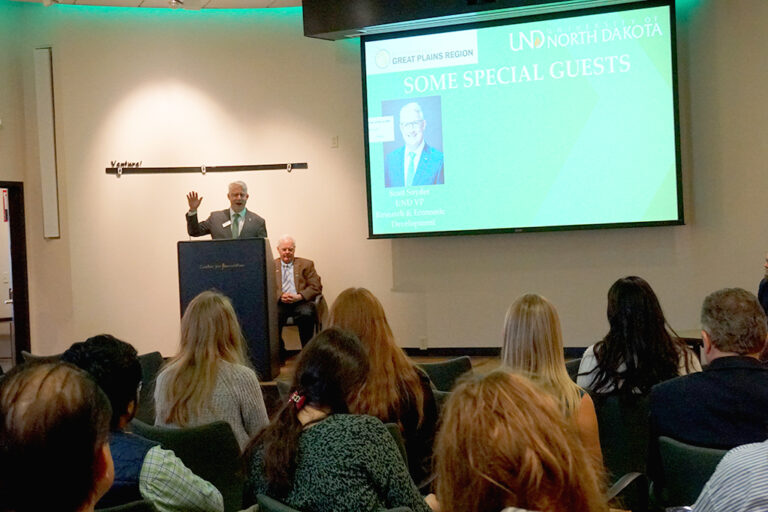UND steps up to support Career Impact Academy
With active role in planning and development, UND is eager to help create career and technical education center
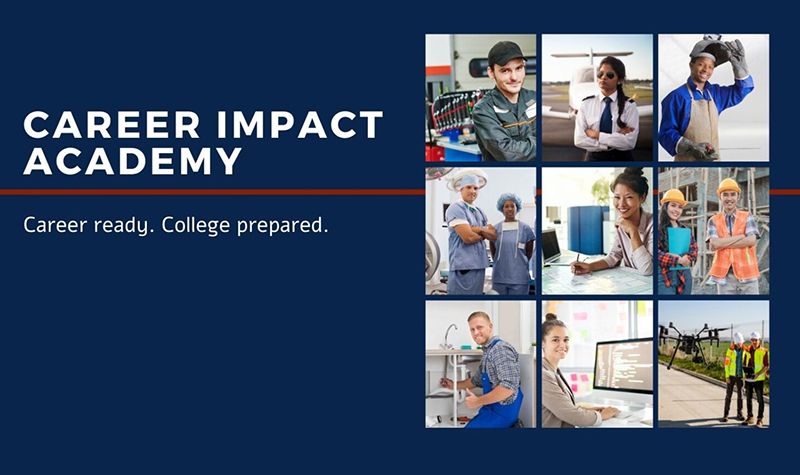
Now more than ever, workforce development is the No. 1 issue for the City of Grand Forks, City Administrator Todd Feland told UND Today.
In fact, because of the pandemic’s impact on the local economy, the issue is now “hands down” the highest priority for the entire Grand Forks region.
That’s why a recent initiative to create a new Career and Technical Education Center in Grand Forks is so vital. Spurred by Gov. Doug Burgum and the North Dakota Legislature’s decision to set aside $70 million for the creation of several such centers statewide, the Grand Forks initiative’s goal is to improve the community’s prospects of retaining, as well as attracting, the next generation of workforce talent.

With UND’s active participation, work has been going on since the summer months to plan and establish what is being called the Career Impact Academy. The $20 million facility is intended to provide ample space and resources for regional career training needs in fields ranging from computer programming to construction to cooking, and beyond.
“The pandemic hit us hard in these fundamental workforce sectors where, for instance, you need a commercial driver’s license, technical skills like welding or culinary skills,” Feland said. “We were impacted in areas that tell us our workforce was tight going into the pandemic.”
Now, he said, Grand Forks has an opportunity unlike any it’s had since the turn of the century to invest in technical education, and he’s glad to have UND’s support in making it happen.
“If we weren’t already collaborating so well between the community and UND, such an opportunity wouldn’t be able to move forward as quickly,” Feland said. “UND has done all of these public-private partnerships that have involved Grand Forks, including the Workforce Development Center that will be in the new Nistler College of Business & Public Administration.
“There are many great things we’ve been partnering on, over the past few years, and this new effort is a unique opportunity for us to engage higher education and show how UND engages with public education and industry, all in one building.”
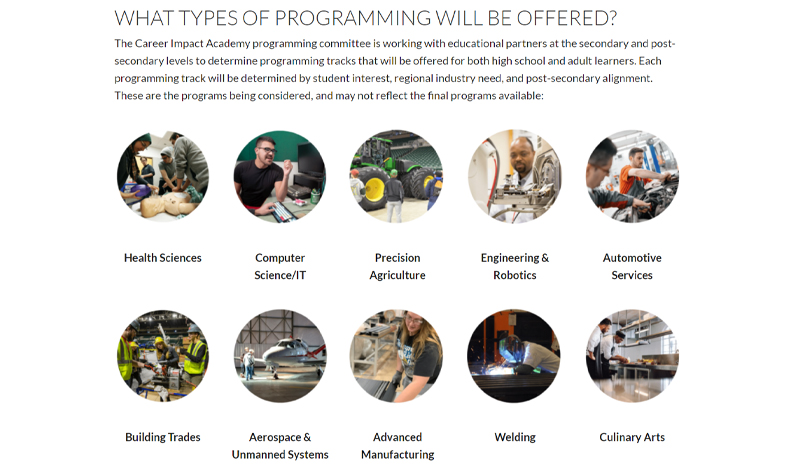
‘One-Stop Shop’ for technical education
Jeff Holm, UND’s vice provost for online and strategic initiatives, was tapped by UND President Andy Armacost to represent the University on the Career Impact Academy’s steering committee. Through that role, Holm has taken part in subcommittees on program planning and public engagement as well as policy and procedures.
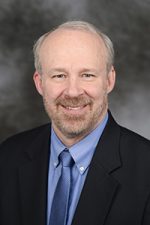
The project’s development has shown the value in making the space available not only to high school students preparing for future careers, but to adults transitioning in their careers and companies advancing their employees’ skills, Holm said.
“UND has One-Stop Student Services, which provides 99 percent of the financial services a student needs, and for the other 1 percent they’re sent to the right place,” said Holm. “That’s the possibility I see with the Career Impact Academy, and how it will fit with what already exists in the region.”
The central idea is that this new, comprehensive space will fill the gaps where current educational offerings are restricted by space, funding or both, according to Holm. For example, culinary arts is a career path that’s expected to grow significantly in the next five to 10 years, Holm said. Schools don’t have the capability to create a suitable training space, which is essentially an expanded commercial kitchen.
“We’re looking to public schools to continue offering training in their current facilities,” Holm said. “But the things they can’t provide would be available at the Career Impact Academy, which would especially benefit rural districts in the ability to have everybody come together at this location.”
Another pillar of the project is providing a launch pad for people working in a fluctuating economy. Holm referred to the Career Impact Academy as a means for people to plan out a pathway that can provide achievable steps on the career staircase.
“There really isn’t a central, comprehensive place right now for people in the community to reskill or upskill, and I think that aspect of it is just as important as creating additional facilities for our young people,” Holm said.

Keeping UND front-and-center
As for UND’s potential connections to the Career Impact Academy, in the event of the project moving ahead, Holm sees places such as UND being front-and-center when it comes to the idea of the “career staircase.”
Holm and the programming committee are outlining how programs offered at the Career Impact Academy will align with certificates, associate’s and bachelor’s degrees as well as advanced degrees at UND and around the region.
“It’s my objective that UND will be able to provide some educational opportunities, perhaps in the center itself,” said Holm. “But UND could also connect online through self-paced, enroll anytime courses.
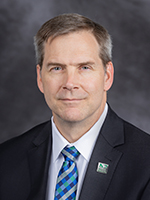
“Overall, the whole committee is trying to create a comprehensive Academy that would begin with high school students and extend through the entire community, at all ages.”
UND Provost Eric Link said he is proud to have UND partnering on such an important initiative, and that the Career Impact Academy will bring K-12, higher education and industry together to provide North Dakotans with pathways to “exciting, rewarding and prosperous careers.”
“This Academy will help build the talent pipeline to meet Grand Forks and North Dakota’s workforce needs,” Link said. “Our mission at UND is to provide transformative learning, discovery, and community engagement opportunities for developing tomorrow’s leaders. The Career Impact Academy is a wonderful example of UND’s mission in action.”
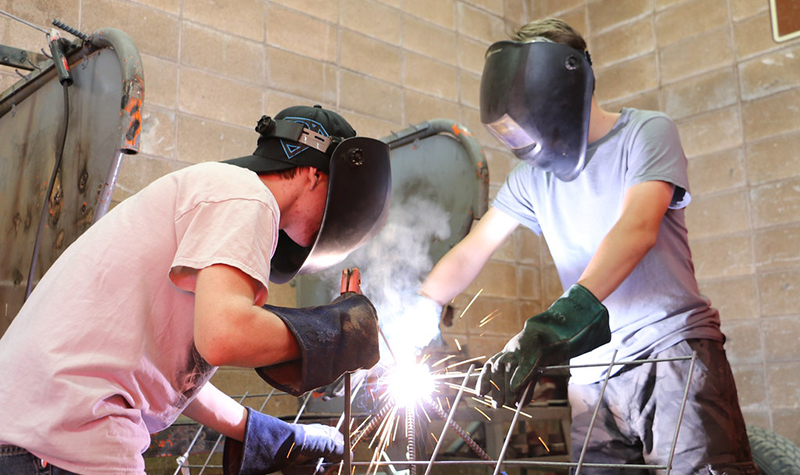
A complementary facility for the region
And UND isn’t the only educating institution with an interest in seeing this project through. Doug Darling, president of Lake Region State College in Devils Lake, oversees a school that’s involved in providing dual credit opportunities as well as career pathways for Grand Forks Public Schools. Darling, like Holm, is a member of the Career Impact Academy steering committee.

“One of the things that our public schools feel like they’re missing is the opportunity for their students to explore more careers,” Darling told UND Today. “There are high-demand, high-wage positions in technical areas, but the schools have limited facilities to address some of those fields.”
He also sees the project as a great opportunity for local industry to work with the education system to match students up with employers who need the workforce. The result, ideally, would be high-skill and high-wage jobs that keep people in North Dakota, Darling said.
Northland Community & Technical College, in East Grand Forks, is also represented on the Career Impact Academy steering committee. And while it might be easy to see Lake Region and Northland as competitors, Darling contends that the two work together to complement one another. He similarly sees the Career Impact Academy – with its planned lab facilities and workshops – as complementary, as well as a facility that can better serve local industry needs, with regard to technical training and skill-sharing.
“What we’ve always tried to do with our programs is provide the next step on the career ladder, so that there was a transfer process to go somewhere such as UND for the next degree,” Darling said. “That’s how I see this effort as fitting with our mission, and what we’ve been doing to deliver dual credit and technical education opportunities in Grand Forks.”
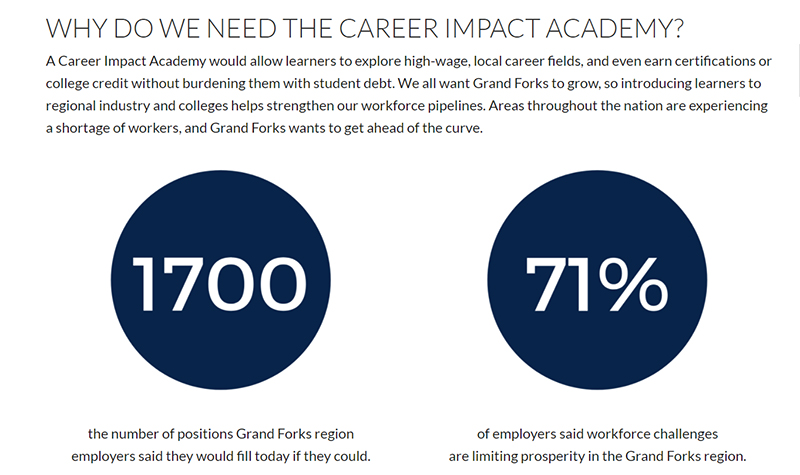
Matter of when, not if
Darling mentioned that since the 1970s, when six multi-district career and technical education centers were built in North Dakota, there hasn’t been an opportunity from the state that’s comparable to what’s available now.
Given the project’s regional focus, as opposed to solely involving Grand Forks, Darling sees the funding as an opportunity for Grand Forks to lead in the northeastern part of the state.
“I think there is a piece in this project for all of the stakeholders involved, and we’ll get more out of it together than we would separately,” he remarked.
Out of the $70 million being granted by the state’s Career and Technical Education Board, the maximum amount available per request is $10 million. Along with that, the Legislature stipulated a one-to-one funding match, whether public or private. Hence, the Grand Forks-based plan is looking at a $20 million project.
Recent decisions, such as finalizing the site for the Career Impact Academy, have given the project a path forward, but work will continue in planning and funding until the application submission is due December 1. Asked about the level of buy-in from the business community, Feland said virtually everyone feels the need to move Grand Forks forward to the next level of workforce development.
According to Feland, the resounding attitude among the steering committee and stakeholders is that the Career Impact Academy “has to happen.” He said that business leaders aren’t asking “whether” such a facility will happen; they’re using the word “when.”
“This opportunity isn’t coming around again any time soon, and it’s strategically important for the community,” Feland said. “We are making this happen.”


